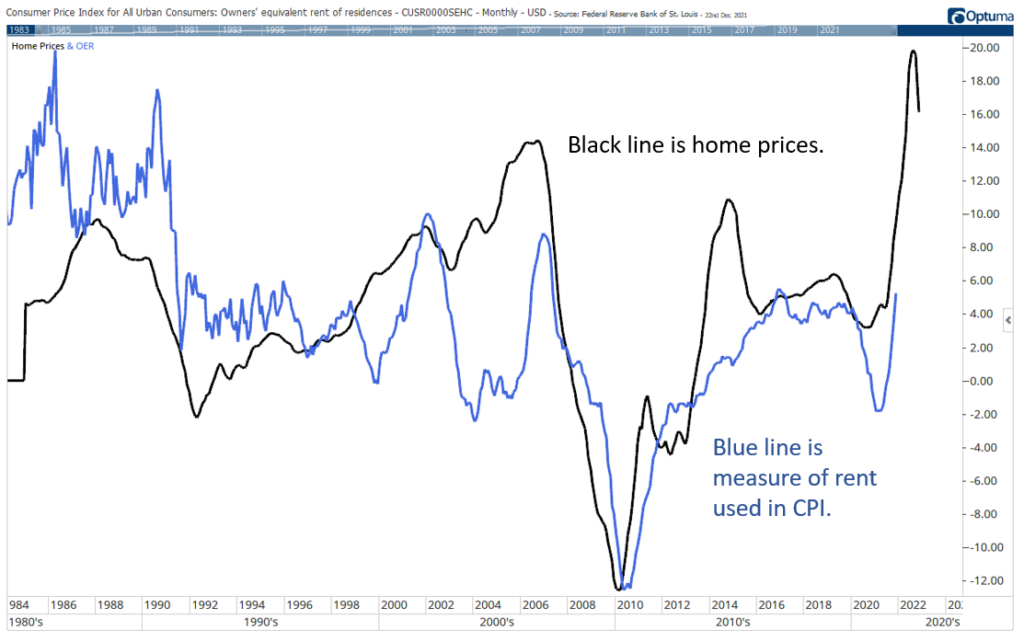As we approach the new year, economists question whether the trend in economic growth can continue. Many have stopped questioning whether the trend in inflation can continue. After all, the Federal Reserve assured us earlier this month there’s a plan for inflation.
Unfortunately, the Fed is too late: Inflation is almost certain to continue in 2022. One reason is because of how inflation is calculated.
Housing costs are the largest line item in the monthly inflation report. It accounts for 32.4% of the Consumer Price Index (CPI).
Within the CPI, the Bureau of Labor Statistics created two indexes — rent and Owners’ Equivalent Rent (OER). Economists argue this allows for an apples-to-apples comparison. However, owners don’t know what their homes would actually rent for. To obtain this data, BLS asks: “If someone were to rent your home today, how much do you think it would rent for monthly, unfurnished and without utilities?”
I know the price of homes in my neighborhood. That’s a simple math problem. But I have no idea what any of those homes would rent for. I believe a majority of homeowners are in the same boat. This means the OER data is less accurate than a measure of home prices.
While less accurate, it’s still useful.
The chart below shows the 12-month rate of change (ROC) in the OER as the blue line. The ROC of home prices is in black. For home prices, I used the S&P/Case-Shiller U.S. National Home Price Index. I shifted that index forward by 12 months to show that they predict changes in OER.
ROC and Home Price Index Predict Spike in Rent

How to Trade Around a 2022 Economic Trend
In 2021, home prices jumped about 19%, based on the Case-Shiller index. That index lags by three months due to data gathering delays. Anecdotally, we know prices have continued to trend higher for the past three months.
Home prices tell us that the highest-weighted component of the CPI could soar next year. If the OER rises by 10%, CPI will be 2.3% higher. Other prices could fall, but if they don’t, inflation will remain above the Fed’s target of 2% for at least the next year.
The rent index will likely rise as well. Rents reset slowly — just once a year for the average tenant. As leases renew, landlords push prices up between 5% and 10%. That’s another factor that will drive inflation higher in 2022.
This will affect your investment portfolio. Inflation has differing impacts on each sector, even on each company. That tells us that 2022 will be the ideal time for short-term trades, getting in and out of positions rather than suffering through declines that management teams and analysts will attribute to inflation.
Michael Carr is the editor of True Options Masters, One Trade, Peak Velocity Trader and Precision Profits. He teaches technical analysis and quantitative technical analysis at the New York Institute of Finance. Follow him on Twitter @MichaelCarrGuru.
Click here to join True Options Masters.





